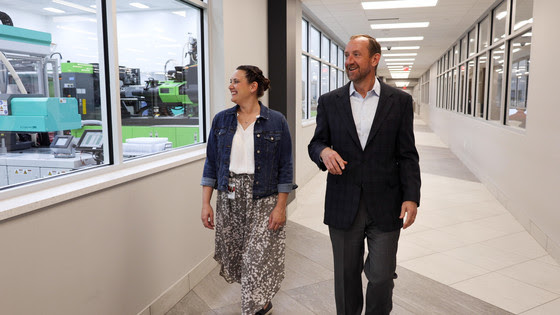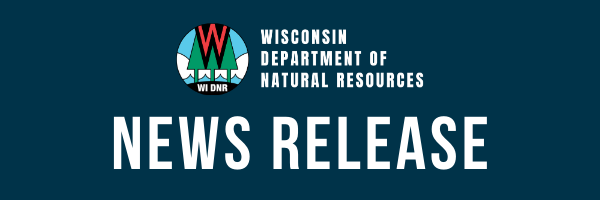| NEWS RELEASE: Wisconsin DNR Announces November 2021 Wolf Harvest Quota |
| 10/04/2021 |
| |
|
FOR IMMEDIATE RELEASE: Oct. 4, 2021
Contact: DNR Office of Communications
DNRPress@wisconsin.gov
Wisconsin DNR Announces November 2021
Wolf Harvest Quota
Licenses To Go On Sale Oct. 25
MADISON, Wis. – The Wisconsin Department of Natural Resources (DNR) today announced that the statewide quota for the Fall 2021 wolf season has been set at 130 wolves.
The department is authorized by state statute and the department’s rules to make the final decision on the quota for the Fall 2021 wolf harvest. In determining the quota, the department considered the best available information and scientific modeling, as well as the input from the Wolf Harvest Committee, the Natural Resources Board, and the many groups and members of the public who provided comments to the department and the Board.
State-licensed hunters and trappers will be authorized to harvest 74 wolves within the six zones established in the department’s regulations. The department will honor the Ojibwe Tribes’ treaty right within the Ceded Territory of 56.
The department will use a license ratio of 5:1 to offer the opportunity to 370 successful applicants to purchase a state wolf hunting license. The department plans to notify successful applicants Oct. 25, at which point licenses will also go on sale.
The U.S. Fish and Wildlife Service removed gray wolves from the federal endangered species list on Jan. 4, 2021, returning management authority to state agencies. As required by state statute, the DNR will continue to plan for a wolf harvest season to open on Nov. 6, 2021.
The DNR is currently updating Wisconsin’s wolf management plan with input from a Wolf Management Plan Committee. The department will continue working towards completing a 10-year wolf management plan to guide management decisions beginning in 2022.
More information on the Fall 2021 quota and license information is available on the DNR website.
|
|
|
|
|
 |
| NEWS RELEASE: Wisconsin Air Quality Report Shows Improvement |
| 10/05/2021 |
| |
|
FOR IMMEDIATE RELEASE: Oct. 5, 2021
Contact: Craig Czarnecki, DNR Air Program Outreach Coordinator
craig.czarnecki@wisconsin.gov or 608-267-3137
Wisconsin Air Quality Report Shows Improvement

The newly released 2021 Wisconsin Air Quality Trends report shows Wisconsin’s air quality continues to improve, building on a nearly 20-year trend. / Photo Credit: Wisconsin DNR
MADISON, Wis. – The Wisconsin Department of Natural Resources (DNR) today announced the newly released 2021 Wisconsin Air Quality Trends report shows Wisconsin’s air quality continues to improve, building on a nearly 20-year trend.
According to the annual report, concentrations of monitored pollutants are decreasing throughout the state, and a majority of the state is meeting all federal air quality standards.
This year’s report includes official state monitoring data through 2020 for air pollutants regulated under the federal Clean Air Act, including ground-level ozone, particle pollution, sulfur dioxide, nitrogen dioxide and carbon monoxide.
“Based on extensive health studies, the Environmental Protection Agency (EPA) establishes specific air quality standards for each pollutant,” said Katie Praedel, DNR Air Monitoring Section Chief. “The DNR’s job is to measure pollutants around the state to determine if concentrations are below the health-based federal standards.”

The most recent data shows statewide reductions in ozone values, including along Wisconsin’s Lake Michigan shoreline, an area historically impacted by elevated ozone concentrations. While nine Lake Michigan shoreline counties are not currently meeting national standards, the region has seen a 25% average reduction in ozone concentrations since 2001.
Wisconsin has also seen dramatic reductions from industrial sources of air pollutants. Since 2002, industrial source emissions of volatile organic compounds (VOCs) have dropped 39%. VOCs react in the air to form ozone, so this decline in emissions is very important to meeting state ozone goals. Emissions of sulfur dioxide have decreased 92%.
The DNR attributes the overall pollutant concentration decrease to the implementation of a variety of federal and state pollution control programs. The greatest reductions are a direct result of cleaner burning and more efficient fuel combustion from highway vehicles and electric utilities.
In addition, fine particle concentrations have decreased 35% since 2002, and the entire state is meeting the federal standard, which was not the case a decade ago.
“We will continue working with our local, state and federal partners, along with several research organizations to ensure continued improved air quality trends, especially along our lakeshore and where groups are disproportionately impacted by air pollution,” said Gail Good, DNR Air Program Director.
During the Spring 2020 timeframe of Gov. Tony Evers’ COVID-19 “Safer at Home” executive orders, preliminary data from the Milwaukee monitoring site along I-94 on College Avenue showed a reduction in daily peak concentrations of nitrogen dioxide and carbon monoxide associated with rush hour traffic.
A snapshot data analysis suggests that nitrogen dioxide concentrations dropped by an additional 14% for the period following the “Safer at Home” order (enacted March 25, 2020) relative to a similar 2019 timeframe. However, emissions from vehicles are only one factor contributing to air quality.
Emissions from other sectors, such as industry, power generation and non-road mobile sources are also important contributors that did not experience emissions declines during the “Safer at Home” order. Other factors like temperature and wildfire smoke impact pollutant concentrations as well. A more detailed analysis of all factors is needed to specifically quantify how “Safer at Home” orders may have impacted air quality.
The 2021 Air Quality Trends Report, along with previous reports, are available on the DNR’s Air Quality webpage. Current Wisconsin air quality conditions can be found on the Wisconsin Air Quality Monitoring data webpage.
|
|
|
|
|
|
 |
| NEWS RELEASE: DNR Seeks Public Comments On Green Tier Application For Phillips-Medisize, St. Croix Meadows Facility |
| 10/05/2021 |
| |
|
FOR IMMEDIATE RELEASE: Oct. 5, 2021
Contact: Weston Wegener, DNR Business Support Coordinator
Weston.Wegener@Wisconsin.gov or 608-284-0908
DNR Seeks Public Comments On Green Tier Application For Phillips-Medisize, St. Croix Meadows Facility

The Wisconsin DNR is seeking public comments on the Green Tier application for Phillips-Medisize, St. Croix Meadows manufacturing facility. / Photo Credit: Phillips-Medisize
MADISON, Wis. – The Wisconsin Department of Natural Resources (DNR) is seeking public comments on a Green Tier application proposal covering sustainability activities at the Phillips-Medisize, a Molex company, St. Croix Meadows manufacturing facility located at 2202 Carmichael Road in Hudson.
If the application is accepted, the St. Croix Meadows facility will join 11 other Phillips-Medisize Wisconsin facilities currently in Green Tier.
Tier 1 of Green Tier is encourages, recognizes and rewards companies committed to superior environmental performance. Applicants must have a good environmental record and agree to implement an environmental management system, which is used to set goals, assess their progress, and identify opportunities for continual environmental improvement. In addition, participants must have that system audited regularly and set goals and objectives to maintain superior environmental performance.
The St. Croix Meadows facility manufactures groundbreaking solutions for leading healthcare and life science companies. On average, the company commercializes 50 new products annually for customers, including the first-to-market FDA-registered, connected drug delivery device.
Phillips-Medisize brings decades of experience in advanced electronics, connectivity and sensor technologies to help transform medical and pharmaceutical solutions. When Phillips-Medisize joined Molex, they adopted the Molex ECOCARE policy on environmental performance and established environmental, health and safety management systems throughout the organization.
“We believe responsible management of our environmental resources is vital to providing products and services that help people improve their lives while using fewer resources and respecting the environment,” said Paul Chaffin, CEO of Phillips-Medisize.
The company’s dedication to environmental excellence has helped it successfully establish and sustain certification to the ISO 14001 environmental management system standards since 2001. Future goals at St. Croix Meadows include shrinking their environmental footprint by reducing hazardous waste by 5% and landfill waste by 5%.
The DNR will accept written comments until Nov. 4, 2021. Direct comments to Weston Wegener at weston.wegener@wisconsin.gov or 608-284-0908.
For more information, visit the DNR's webpage for the Phillips-Medisize application.
|
|
|
|
|
 |
| CORRECTION: DNR Seeks Public Comments On Green Tier Application For Phillips-Medisize, St. Croix Meadows Facility |
| 10/05/2021 |
| |
|
FOR IMMEDIATE RELEASE: Oct. 5, 2021
Contact: Weston Wegener, DNR Business Support Coordinator
Weston.Wegener@Wisconsin.gov or 608-284-0908
DNR Seeks Public Comments On Green Tier Application For Phillips-Medisize, St. Croix Meadows Facility

The Wisconsin DNR is seeking public comments on the Green Tier application for Phillips-Medisize, St. Croix Meadows manufacturing facility. / Photo Credit: Phillips-Medisize
Editor's Note: The previous news release contained an incorrect link to the Green Tier participant's webpage. The correct link is updated below.
MADISON, Wis. – The Wisconsin Department of Natural Resources (DNR) is seeking public comments on a Green Tier application proposal covering sustainability activities at the Phillips-Medisize, a Molex company, St. Croix Meadows manufacturing facility located at 2202 Carmichael Road in Hudson.
If the application is accepted, the St. Croix Meadows facility will join 11 other Phillips-Medisize Wisconsin facilities currently in Green Tier.
Tier 1 of Green Tier is encourages, recognizes and rewards companies committed to superior environmental performance. Applicants must have a good environmental record and agree to implement an environmental management system, which is used to set goals, assess their progress, and identify opportunities for continual environmental improvement. In addition, participants must have that system audited regularly and set goals and objectives to maintain superior environmental performance.
The St. Croix Meadows facility manufactures groundbreaking solutions for leading healthcare and life science companies. On average, the company commercializes 50 new products annually for customers, including the first-to-market FDA-registered, connected drug delivery device.
Phillips-Medisize brings decades of experience in advanced electronics, connectivity and sensor technologies to help transform medical and pharmaceutical solutions. When Phillips-Medisize joined Molex, they adopted the Molex ECOCARE policy on environmental performance and established environmental, health and safety management systems throughout the organization.
“We believe responsible management of our environmental resources is vital to providing products and services that help people improve their lives while using fewer resources and respecting the environment,” said Paul Chaffin, CEO of Phillips-Medisize.
The company’s dedication to environmental excellence has helped it successfully establish and sustain certification to the ISO 14001 environmental management system standards since 2001. Future goals at St. Croix Meadows include shrinking their environmental footprint by reducing hazardous waste by 5% and landfill waste by 5%.
The DNR will accept written comments until Nov. 4, 2021. Direct comments to Weston Wegener at weston.wegener@wisconsin.gov or 608-284-0908.
For more information, visit the DNR's webpage for the Phillips-Medisize application.
|
|
|
|
|
 |
| NEWS RELEASE: eDNA From Invasive Carp Identified In Milwaukee River |
| 10/05/2021 |
| |
|
FOR IMMEDIATE RELEASE: Oct. 5, 2021
Contact: Todd Kalish, DNR Deputy Bureau Director of Fisheries Management
Todd.Kalish@wisconsin.gov or 608-266-5285
eDNA From Invasive Carp Identified In Milwaukee River
DNR Conducts River Sampling Week Of Oct. 4
MADISON, Wis. – The Wisconsin Department of Natural Resources (DNR) today announced it would conduct targeted invasive carp sampling in the Milwaukee River with assistance from U.S. Fish and Wildlife Service (USFWS) during the week of Oct. 4, 2021, after detecting invasive carp environmental DNA (eDNA).
In June 2021, routine eDNA sampling by the USFWS detected bighead carp eDNA at one of the 100 sample locations in the Milwaukee River. In response to this detection, an additional 150 eDNA samples were collected and analyzed in September 2021. One of these samples returned positive for invasive carp DNA, indicating the presence of either bighead or silver carp eDNA.
The targeted sampling efforts in the Milwaukee River include electroshocking and netting at locations near the positive eDNA detections and in suitable habitats for invasive carp species, such as bighead or silver carp.
The eDNA sampling cannot specify if the detected DNA was from a live fish or from another source, such as bird feces, water transported in the live well of a recreational boat recently in invasive carp infested waters, or from melted ice used to store invasive carp at fish markets that flowed into storm sewers. However, repeated detections of eDNA over time increases the concern that the genetic material may have come from fish living in the area where the sample was collected.
The DNR routinely monitors the Milwaukee River to assess multiple species and is also monitored by the USFWS for aquatic invasive species. The USFWS conducted netting and electrofishing surveys during the week of Sept. 13. The DNR conducted an electrofishing survey on Sept. 29.
No live or dead bighead or silver carp have been observed or reported in the Milwaukee River by the DNR or USFWS.
Prevention remains the most effective tool to protect the Great Lakes from invasive carp. The DNR asks anglers who encounter any bighead or silver carp while fishing in Wisconsin to keep the fish by putting it on ice and to call the local DNR. Anglers should also check that any baitfish they purchase or catch are not invasive carp.
Photo identification tools and more information about invasive carp are available on the DNR's invasive carp webpage.
|
|
|
|
|
 |
| NEWS RELEASE: DNR To Host Virtual Hearing On Village Of Somers Water Diversion Application Nov. 10 |
| 10/08/2021 |
| |
|
FOR IMMEDIATE RELEASE: Oct. 8, 2021
Contact: DNR Office of Communications
DNRPress@wisconsin.gov
DNR To Host Virtual Hearing On Village Of Somers
Water Diversion Application Nov. 10
Public Comments Accepted Until Nov. 30
MADISON, Wis. — The Wisconsin Department of Natural Resources (DNR) will host a virtual public hearing on Nov.10, 2021, to discuss the Village of Somers’ Lake Michigan water diversion application.
The hearing will be held at 6 p.m. via Zoom. The hearing will include a brief informational presentation followed by an opportunity for the public to provide oral comments.
The proposed diversion is for the Somers Water Utility to extend public water service to portions of the village in the Mississippi River Basin that do not currently have a public water supply.
The Village of Somers proposes to divert up to an annual average of 1.2 million gallons of water per day to the Mississippi River Basin. The Great Lakes Compact requires that the water be treated and returned to the Lake Michigan Basin, less an allowance for consumptive use. The Village of Somers purchases water from the Kenosha Water Utility, where it also returns the wastewater.
Pre-registration for the hearing is also available and is strongly encouraged if attendees plan to provide verbal comments during the hearing. Another option is to complete the fillable hearing appearance form and send it to DNRSomersDiversionComments@wisconsin.gov.
The DNR will accept written comments until the close of business on Nov. 30, 2021. Please email comments to: DNRSomersDiversionComments@wisconsin.gov or mail comments to:
Department of Natural Resources
Drinking Water and Groundwater Program
DG/5 Attn: Shaili Pfeiffer
PO Box 7921
Madison, WI 53707-7921
For more information, please visit dnr.wisconsin.gov/topic/WaterUse/Somers. More information about the Great Lakes Compact is also available at dnr.wisconsin.gov/topic/WaterUse/Compact.
EVENT DETAILS
WHAT: Public Hearing On Village Of Somers Water Diversion Application
WHEN: 6 p.m. Nov. 10, 2021
WHERE: Join by Zoom here.
Call in: 312-626-6799; Meeting ID: 873 2441 0224.
|
|
|
|
|
 |
| NEWS RELEASE: DNR Seeking Public Comment For Environmental Review Of Village Of Mount Horeb Drinking Water Loan Program Project |
| 10/08/2021 |
| |
|
FOR IMMEDIATE RELEASE: Oct. 8, 2021
Contact: Kevin Olson, DNR Community Financial Assistance Specialist
Kevin.Olson@wisconsin.gov or 608-234-2238
DNR Seeking Public Comment For Environmental Review Of Village Of Mount Horeb Drinking Water Loan Program Project
MADISON, Wis. – The Wisconsin Department of Natural Resources (DNR) today announced the Village of Mount Horeb is an applicant for funding through the Safe Drinking Water Loan Program (SDWLP) to address deficiencies in its public drinking water system.
The project’s primary focus is on replacing lead service lines in the Village of Mount Horeb.
Activities related to this project are minor actions under Chapter NR 150, Wis. Admin. Code, for which no environmental analysis is required; however, following the SDWLP federal requirement 40 C.F.R. §35.3580, an environmental review must be conducted before funding this project.
The SDWLP has determined that the project will not result in significant adverse environmental effects, and no further environmental review or analysis is needed before proceeding with funding the project.
The public is encouraged to submit comments regarding this decision and the potential environmental impacts of this project. Submit comments by Oct. 22, 2021 to:
Department of Natural Resources
C/O Kevin Olson, Community Financial Assistance, CF/2
101 S Webster St.
P.O. Box 7921
Madison, WI 53707
Phone: 608-234-2238 or Email: Kevin.Olson@wisconsin.gov
Based on the comments received, the SDWLP may prepare an environmental analysis before proceeding with the funding process. The analysis would summarize the DNR’s consideration of the project's impacts and reasonable alternatives.
|
|
|
|
|
 |
| NEWS RELEASE: Virtual CWD Response Plan Review Committee Meeting Oct. 11 |
| 10/08/2021 |
| |
|
FOR IMMEDIATE RELEASE: Oct. 8, 2021
Contact: DNR Office of Communications
DNRPress@wisconsin.gov
Virtual CWD Response Plan Review
Committee Meeting Oct. 11
MADISON, Wis. – The Wisconsin Department of Natural Resources (DNR) today announced it will host the second meeting of the Chronic Wasting Disease (CWD) Response Plan Committee on Monday, Oct. 11 from 8 a.m. to 12 p.m. via Zoom.
The DNR’s 15-year CWD Response Plan, in effect through 2025, helps guide the department’s approach to addressing CWD in Wisconsin. The plan was developed to fulfill its public trust responsibility to manage wildlife and ensure the health of Wisconsin’s wildlife populations. As part of the plan’s implementation, the department will review progress toward meeting its goals and objectives every five years.
The committee is comprised of a group of stakeholders representing conservation, business and hunting organizations and tribal governments. During its meetings, the committee will develop input on the plan’s implementation and actions to consider as it completes this second five-year review.
Chronic wasting disease is a fatal, infectious nervous system disease of deer, moose, elk and reindeer/caribou. The Wisconsin DNR began monitoring the state's wild white-tailed deer population for CWD in 1999. The first positives were found in 2002.
More information on chronic wasting disease is available on the DNR's CWD webpage.
Additional information on the DNR’s CWD response plan is available on the DNR’s website.
EVENT DETAILS
WHAT: CWD Response Plan Committee Meeting
WHEN: 8 a.m. – 12 p.m. Oct. 11, 2021
WHERE: Join by Zoom here
Call in: 312-626-6799; Meeting ID: 896 1799 5386
There is no registration required to attend, and a recording of the meeting will be posted to the DNR website.
|
|
|
|
|















